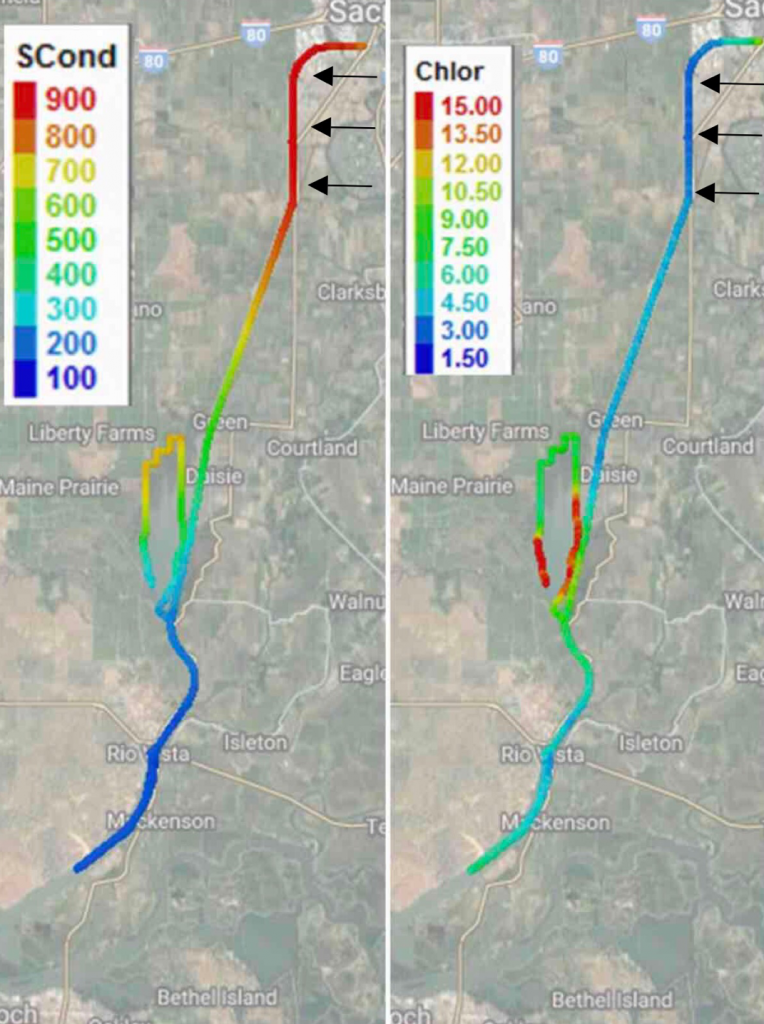A September 24, 2018 Reclamation press release announces:
The Bureau of Reclamation has issued final environmental documents for the Sacramento Deep Water Ship Channel Nutrient Enrichment Project. The project’s purpose is to determine if the addition of nitrogen can stimulate (fish food organisms) production in a section of the ship channel, which is isolated from the Delta in terms of water flow.
The project is an initial step in a broader effort to determine if, through the repair of the West Sacramento lock system, Sacramento River flows could be used to move fish food organisms through the Sacramento Deep Water Ship Channel to the Delta. This step seeks to benefit delta smelt and the Bay-Delta System.
The press release and project Final Environmental Assessment (EA) are misleading in representing existing conditions and future project benefits.
- Reclamation fails to explain the high EC (salt levels) in the project reach of the upper ship channel (Figures 1 and 2). Figure 1 includes three black arrows added to the project figure. These arrows represent large municipal/agricultural drains from the adjacent West Sacramento “island basin” that add salts, nutrients, and other wastes to the ship channel on a seasonal basis (generally early spring). The poor productivity in late summer may be at least partially due to these “waste” discharges.
- The EA says: “This will restore nitrogen levels that occur naturally earlier in the season before drawdown by phytoplankton growth.” However, high nitrogen levels are not “natural.” They are man-made.
- The EA says: “The fertilizer to be used for this experiment contains 1% ammonium nitrogen (NH4-N).” The press release and EA fail to mention billion dollar efforts to remove ammonium nitrate inputs to the north Delta from the Sacramento Regional Wastewater Treatment facility.
The press release acknowledges that repair of the ship channel gates would allow seasonal pulses of high plankton productivity to be flushed into the north Delta. Effective operation of these gates (selective opening and closing) would move existing blooms in the upper Ship Channel down into the Delta, likely eliminating the need for the addition of nitrogen. It would also reduce the temperature of the water in the Ship Channel. For more on these issues, see a previous post.

Figure 1. EA figure of EC (salt) and Chlorophyll levels in ship channel. Added black arrows show West Sacramento drains into ship channel.

Figure 2. EA figure showing consistent high EC levels in upper ship channel.
